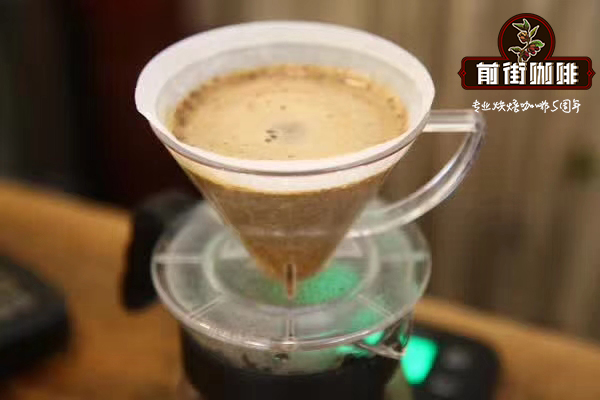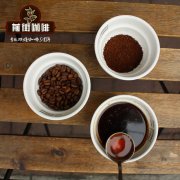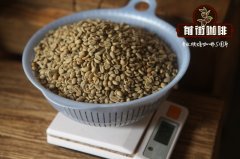How is the sun flavor of SL28 raisins in La Lajas Manor, Costa Rica?

SL28 raisin sun in La Lajas Manor, Costa Rica
Production area: Central Valley
Planting altitude: 1300-1500m
Variety: SL28
Type of soil: volcanic soil
Grading standard: SHB
Treatment: raisin sun treatment
Harvesting method: manual harvesting
Related certification: JAS, NOP, USDA
The manor was founded in 1840.
Manor size: 38 hectares
Average annual temperature / rainfall: 20 ℃ / 2500-2700 mm
Flavor: ripe grapes, plums, litchi, caramel
Francisca and Oscar Chac ó n are the third generation operator of Las Lajas. Las Lajas is located in the foothills of Sabanilla de Alajuela Po á s Volcano in the Central Valley. The Chac ó n family has been growing coffee since their grandparents for more than 80 years. When Oscar's father died of cancer in 1995, they suspected that the chemical fertilizers and pesticides used on the farm were the culprits. They no longer used toxic chemicals and required all processes to be planted and fertilized in accordance with organic standards. use organic compost, while extending organic standards to soil, shade trees and washing plant procedures, using ecologically friendly natural farming methods and shade planting in native forests. After five years of organic cultivation, until the soil, leaves, and fruit analysis are qualified, in 2000, Lajas became the first organic certified manor in Costa rica, and the Lajas manor has passed the Japanese JAS, American USDA and NOP organic certification. After passing the organic certification, the couple went a step further and began to set up their own treatment plant. In the past, they could only send the cherries from the farm to large commercial processing plants, but the post-processing process was out of control, and there was a washing plant to deal with their own coffee, resulting in a sharp increase in overall quality.
Innovative tanning method-raisin solarization (Raisin): combine black pearl and black soul to dry the whole process for more than three weeks. First of all, it was laid flat on the cement floor in the greenhouse, piled into a hill in the afternoon, covered with plastic cloth for shade, and then spread flat the next morning. About a week or two later, it was changed to the shade of the African scaffolding under the greenhouse. There are two sets of the upper and lower layers of this African shelf. Every day, the upper and lower cycle changes the position, which will make the coffee beans dry evenly until the end of processing, so that the fermentation cycle is higher. The sweetness and flavor complexity of coffee beans are greatly improved.
Important Notice :
前街咖啡 FrontStreet Coffee has moved to new addredd:
FrontStreet Coffee Address: 315,Donghua East Road,GuangZhou
Tel:020 38364473
- Prev

Introduction to the Flavor of multiple anaerobic fermentation and Solar treatment in Kadula, Yunnan, which is rare in Zebra Manor in Yunnan
Origin: Yunnan Zebra Manor, China: 1800 meters above sea level: Kaduai treatment: multiple anaerobic fermentation sun flavor: melon, plum wine, berry, cream zebra manor was established in mid-2017, specializing in organic coffee cultivation, fresh fruit harvesting, processing, baking. The manor is located in Menglian County, Pu'er City, with a planting area of more than 3,000 mu and overseas alternative planting of more than 1,000 mu and sea.
- Next

Panamanian Coffee | brief introduction of Coffee treated with Honey from Reese Manor after Pokaide Losla
Panamanian Pokaide Los La Reese Manor Honey treatment production area: Panana Boquete / Los Lajones/ Eastern slopes of Volcan Baru planting altitude: about 1750mm 2100m soil species: volcanic soil treatment: honey treatment average annual temperature / rainfall: 3500 mm flavor: flower and berry aroma, flavor changes, honey-like oily feeling, toffee
Related
- Detailed explanation of Jadeite planting Land in Panamanian Jadeite Manor introduction to the grading system of Jadeite competitive bidding, Red bid, Green bid and Rose Summer
- Story of Coffee planting in Brenka region of Costa Rica Stonehenge Manor anaerobic heavy honey treatment of flavor mouth
- What's on the barrel of Blue Mountain Coffee beans?
- Can American coffee also pull flowers? How to use hot American style to pull out a good-looking pattern?
- Can you make a cold extract with coffee beans? What is the right proportion for cold-extracted coffee formula?
- Indonesian PWN Gold Mandrine Coffee Origin Features Flavor How to Chong? Mandolin coffee is American.
- A brief introduction to the flavor characteristics of Brazilian yellow bourbon coffee beans
- What is the effect of different water quality on the flavor of cold-extracted coffee? What kind of water is best for brewing coffee?
- Why do you think of Rose Summer whenever you mention Panamanian coffee?
- Introduction to the characteristics of authentic blue mountain coffee bean producing areas? What is the CIB Coffee Authority in Jamaica?

